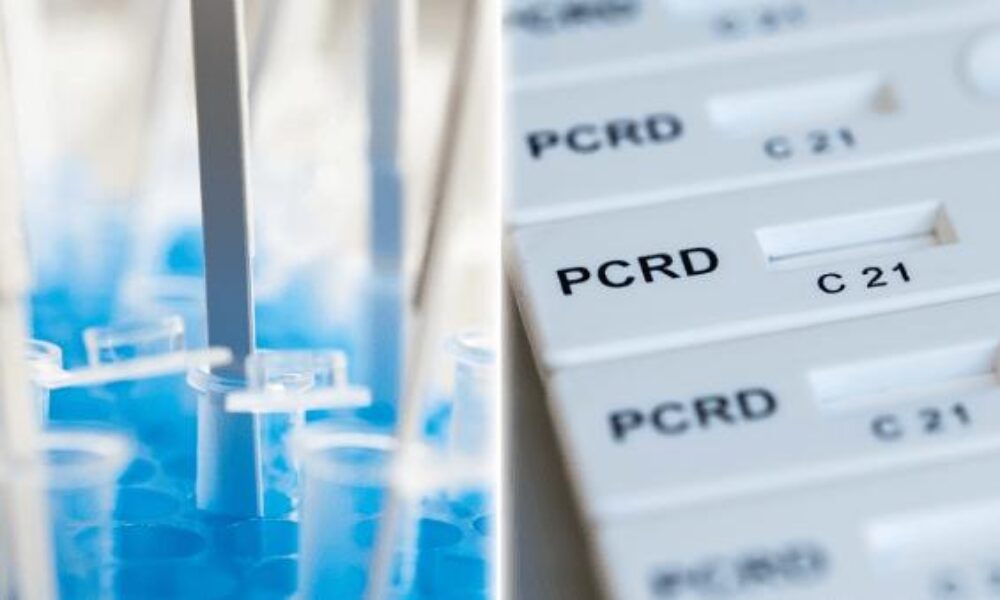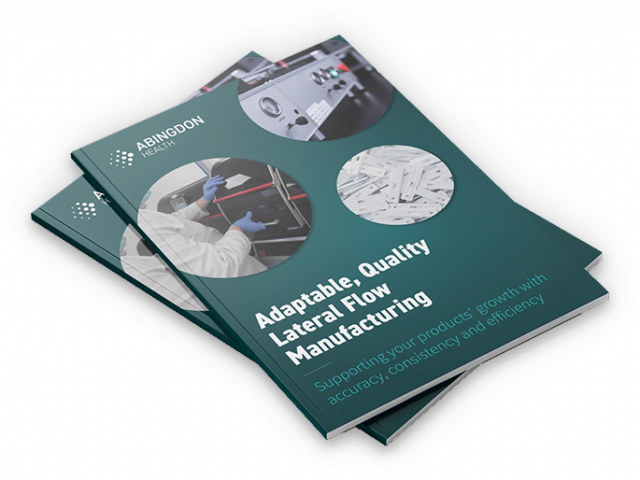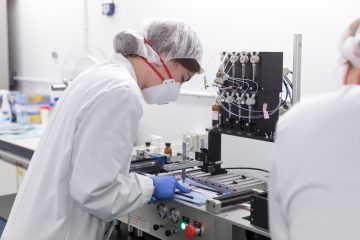The impact of IVDD to IVDR changes on lateral flow test owners; better to act now…

The IVDR Transitional Arrangements
Be IVDR Ready to Protect Your Assay and Business
Support Through the Regulatory Pathway
The Key Take-Away
In our latest lateral flow medical devices regulation article, we look at the European Union’s changing regulatory landscape. On 26 May 2022 the IVDR (In Vitro Diagnostic Medical Devices Regulation) regulations came into force as a replacement for IVDD (In Vitro Diagnostic Medical Devices Directive). Therefore, any new devices must meet IVDR straight away, whilst existing devices can make use of transitional arrangements.1
This article therefore goes through how the regulatory changes impact your device and your business and what support solutions are available to help you navigate the complexity.
For companies wanting to launch lateral flow medical devices on to the EU market for the first time, this guide serves a basis for what actions to follow to meet IVDR requirements.
The IVDR Transitional Arrangements
The IVDR brings many challenges to lateral flow device manufacturers, in particular many devices require third-party oversight from notified bodies for the first time, rather than simply being ‘self-certified’ by manufacturers.
Notified body involvement is set to jump dramatically from approximately 20% of devices under the IVDD to approximately 80% under IVDR. Following the implementation of new classification rules, Class A devices continue to be self-certified whereas Class A Sterile, Class B, Class C and Class D devices all require Notified Body review.
Medical devices certified before 26 May 2022 that meet the IVDD requirements though self-certification or through a valid EC certificate provided by a Notified Body can continue to be placed on the market for a limited time providing there are no significant changes to the device.
The transitional arrangements are in place until the existing EC certificate expires or until one of the following deadlines, dependent on which Class the device will meet under the IVDR.
- Class A (self-certified) 26 May 2022
- Class B 26 May 2027
- Class C 26 May 2026
- Class D 26 May 2025
- Class A sterile 26 May 2027
All new diagnostic products launched and placed on the EU market after 26 May 2022 must meet IVDR requirements.
Be IVDR Ready to Protect Your Assay and Business
Whilst the transitional arrangements above provide slight breathing room for manufacturers, certain aspects of the IVDR were made mandatory on 26 May 2022. Post-market surveillance, vigilance and registration requirements such as EUDAMED need to be implemented immediately which adds a layer of cost burden onto the legal manufacturer.
Compliance with medical device regulations in a territory underpins market success. Considering these regulations are complex and can change, it is critical to keep abreast of the regulatory landscape to protect your assay and business.
The IVDR changes aim to bring in more accountability within the medical device world with performance evaluation reports, which cover scientific validity, analytical performance and clinical performance, for an important part of the IVDR process.
Provision of clinical evidence in accordance with the IVDR, is more significant due to the change to the product classification and based on defined risk-based categories, where ‘A’ is low risk and ‘D’ is high risk.
The higher risk categories necessitate greater requirements for clinical evidence as well as increased involvement of a notified body. Noting the challenge for legacy products being that grandfathering is not an option, and that each existing and new IVD Device must be assessed according to the revised level of risk.
Considering and planning for the regulatory process early in a lateral flow development project helps to maintain a focus on what is required to meet the necessary standards. Without this focus, projects could run over budget, take longer than expected and need to be cancelled altogether.
Abingdon Health Can Help You Be IVDR Ready
Since the EU announced IVDR, our in-house regulatory team has been working with our lateral flow test manufacturing clients to prepare their assays for the deadline. Wherever your lateral flow rapid test is in its lifecycle, contact us to see how we can help.
Below are areas where Abingdon Health can help you plot a way through this regulatory pathway:
-
In helping build the technical documentation to meet EU Regulations
-
Support post-market surveillance activities under IVDR
-
Managing the other areas required to transition to IVDR for example packaging and labelling
-
Generating the clinical performance data; where support is required Abingdon Health can facilitate and plan lateral flow test clinical trials for your device to meet specific market and regulatory requirements
Key Take-Away
Medical device regulations are complex but essential when it comes to launching and keeping a lateral flow test on to the market. Not only do they provide a framework to protect the public, they also give companies a ‘quality checklist of milestones’ to ensure a lateral flow medical device performs, and is therefore viable. The good news is that Abingdon Health can provide significant support and as an integrated contract service provider we offer a seamless services covering, inter alia, your development, manufacturing and regulatory needs: there are many time and efficiency benefits!
At Abingdon Health we pride ourselves on working hard and diligently to meet all regulatory standards. Abingdon Health’s in-house regulatory experts can support you to make a lateral flow product introduction or re-certification as smooth as possible. Contact a member of our team to learn more.




